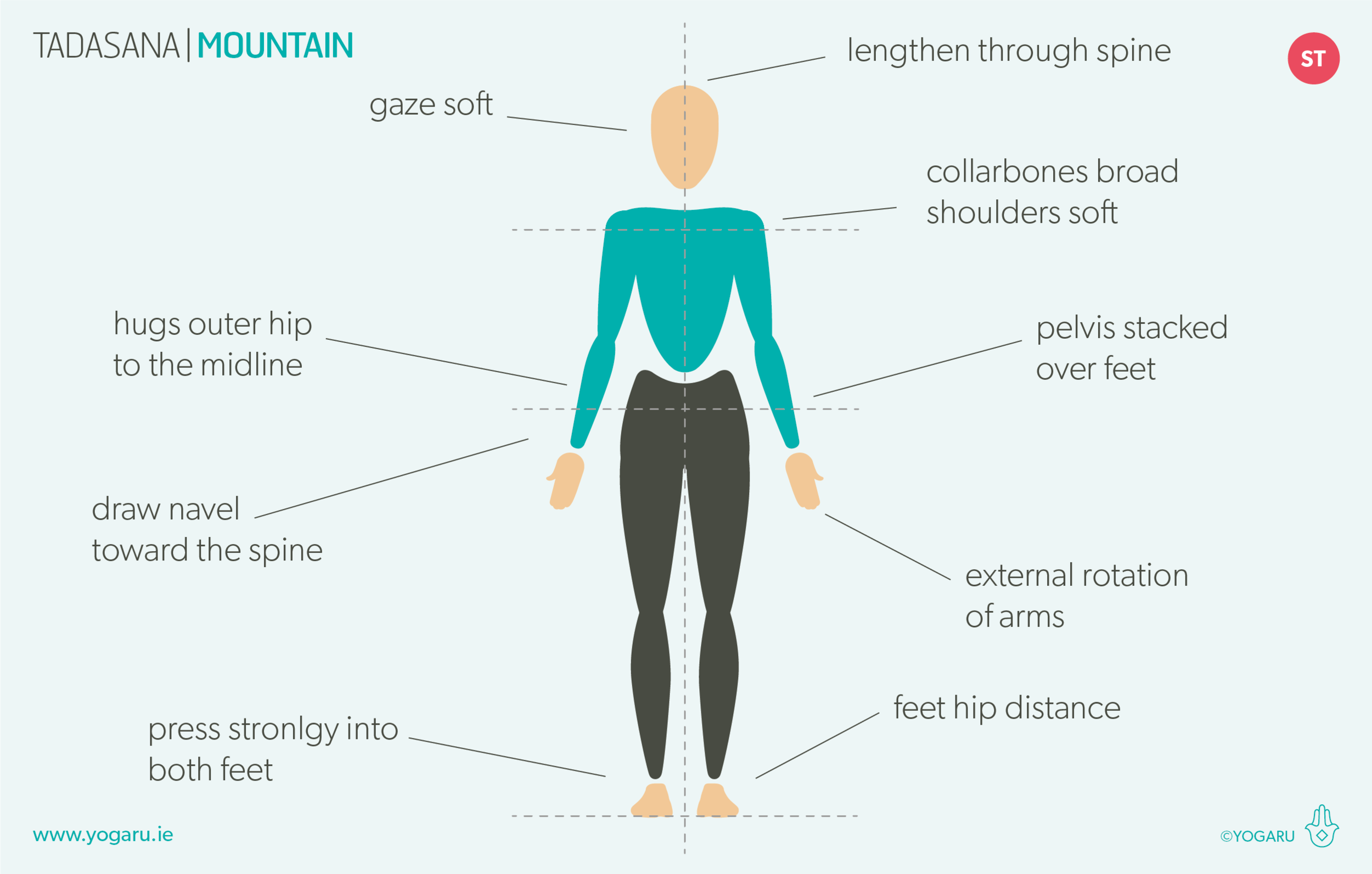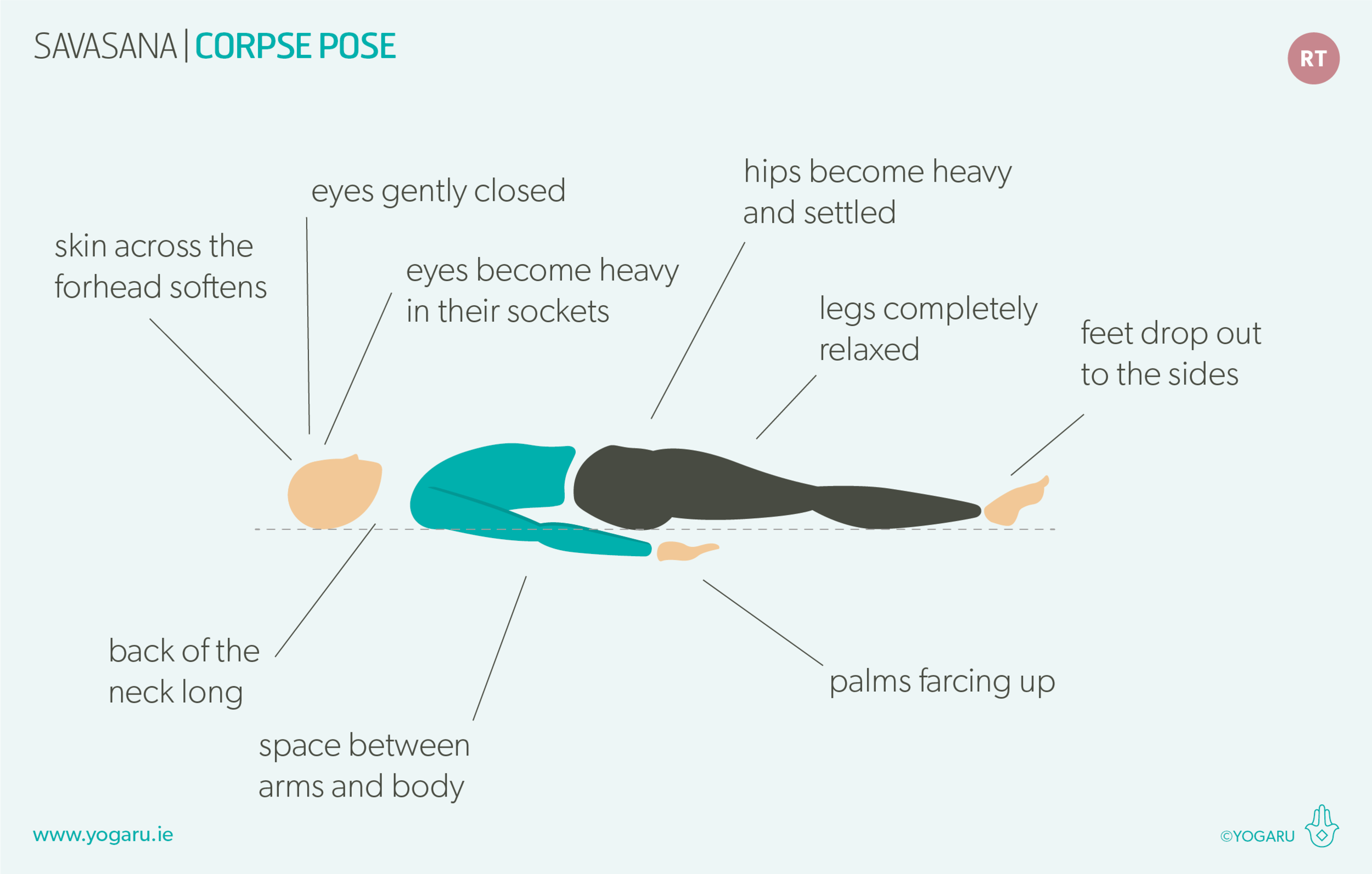STANDING BLUEPRINT
Tadasana/Mountain is a pose that may not look like much is going on from the outside but done with integrity it is a strong pose that is the foundation of all standing poses and helps us find the natural curves of the spine. It also gives us the building blocks for finding balance to incorporate into more challenging poses like Vrksasana/Tree; the principle of press & reach; and how to apply effort & ease into each pose. We often come into Tadasana/Mountain to link mini flows in a sequence but may not be giving it the time it deserves and the credit for how it help us re-centre so that we can continue with our practice. Consciously coming to into this basic standing position, and spending a bit more time exploring it throughout your practice, will build muscle memory for your spine to carry you more upright off the mat, and allow the curves to do their job as a mechanism for shock absorption, as we move through our day. For new teachers out there, Tadasana/Mountain is a great pose to have in the memory bank for coming back to as a means to linking your mini flows together and helping your students find the all important pause in the practice before they eagerly jump into the next pose.
ALIGNMENT CUES
Feet position in Tadasana/Mountain is a personal preference. In general the wider the feet are the easier it is to find balance. If you want to challenge your proprioception and your spatial awareness stand with your feet together, big toes touching. Feet hip distance apart, directly stacked under their hip joint, is also kinder if you have any lower back knee issues. Use Tadasana/Mountain throughout your practice to retune your spine and find symmetry left and right before you move on to your next mini flow of poses. Similar to Savasana you can use it to assimilate the practice and let the effects of the poses ripple through you.
You may not think you need alignment cues for a pose that to the onlooker is essentially standing but there is lots to look for in Tadasana/Mountain:
Stand with your feet hip width apart or feet together.
Lift all ten toes up and place them down one at a time. Spread your feet like you’re trying to make the surface of contact with the ground as wide as possible.
Pour your weight equally into the three points of your feet - big toe mound, little toe and the centre of the heel, feel the lift of your arches and inner ankles.
Hug your outer hips to the midline, pelvis stacked over the foundation of your feet. Lengthen through the front, sides and back of the body. Draw your navel towards your spine.
Broaden through the collarbones, shoulders soften, arms hang down either side of the body, slight external rotation of the arms.
Lengthen through your spine to the tip of your crown, chin level with the ground, back of the neck long, gaze forward.
Notice the constant micro movement even within the stillness as your whole body works out how to stay upright against the force of gravity.
You can also try a slightly different version of Tadasana/Mountain from Vinyasa Krama which one of my favourite Dublin based yoga teachers Phelim May often adds into his Saturday morning class at The Yoga Room. Whenever he gently guides us into this version of Tadasana/Mountain I can’t help thinking of The Oscars, clearly I need to work a bit harder on my attention! Read the above alignment cues and add these small adjustments below:
Arms either side of the body, palm lightly pressing into your sides.
Hug your outer hips to the midline.
Squeeze your inner thighs together, lift up internally through the pelvic floor to your navel and draw your navel towards your spine.
Lift your chest up slightly and draw your shoulder blades together.
To save the images for personal use click and hold down the image until the ‘save image’ option appears; on Mac hold down ‘control’ and click the image to get the option box; on PC right click on the image to get the option box. Scroll down in the ‘option box’ and click ‘save image’.
Ruth Delahunty Yogaru





